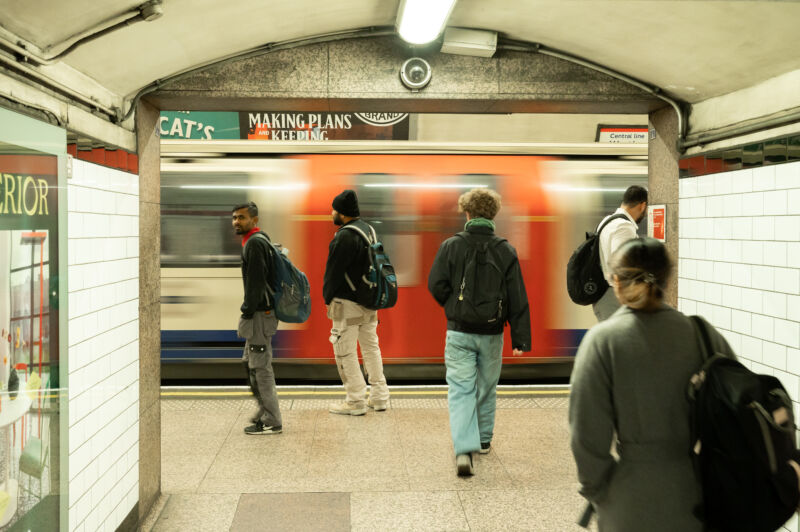
reader comments
37
Thousands of people using the London Underground had their movements, behavior, and body language watched by AI surveillance software designed to see if they were committing crimes or were in unsafe situations, new documents obtained by WIRED reveal. The machine-learning software was combined with live CCTV footage to try to detect aggressive behavior and guns or knives being brandished, as well as looking for people falling onto Tube tracks or dodging fares.
From October 2022 until the end of September 2023, Transport for London (TfL), which operates the city’s Tube and bus network, tested 11 algorithms to monitor people passing through Willesden Green Tube station, in the northwest of the city. The proof of concept trial is the first time the transport body has combined AI and live video footage to generate alerts that are sent to frontline staff. More than 44,000 alerts were issued during the test, with 19,000 being delivered to station staff in real time.

Documents sent to WIRED in response to a Freedom of Information Act request detail how TfL used a wide range of computer vision algorithms to track people’s behavior while they were at the station. It is the first time the full details of the trial have been reported, and it follows TfL saying, in December, that it will expand its use of AI to detect fare dodging to more stations across the British capital.
In the trial at Willesden Green—a station that had 25,000 visitors per day before the COVID-19 pandemic—the AI system was set up to detect potential safety incidents to allow staff to help people in need, but it also targeted criminal and antisocial behavior. Three documents provided to WIRED detail how AI models were used to detect wheelchairs, prams, vaping, people accessing unauthorized areas, or putting themselves in danger by getting close to the edge of the train platforms.
data policies.
In a statement sent after publication of this article, Mandy McGregor, TfL’s head of policy and community safety, says the trial results are continuing to be analyzed and adds, “there was no evidence of bias” in the data collected from the trial. During the trial, McGregor says, there were no signs in place at the station that mentioned the tests of AI surveillance tools.
“We are currently considering the design and scope of a second phase of the trial. No other decisions have been taken about expanding the use of this technology, either to further stations or adding capability.” McGregor says. “Any wider roll out of the technology beyond a pilot would be dependent on a full consultation with local communities and other relevant stakeholders, including experts in the field.”






